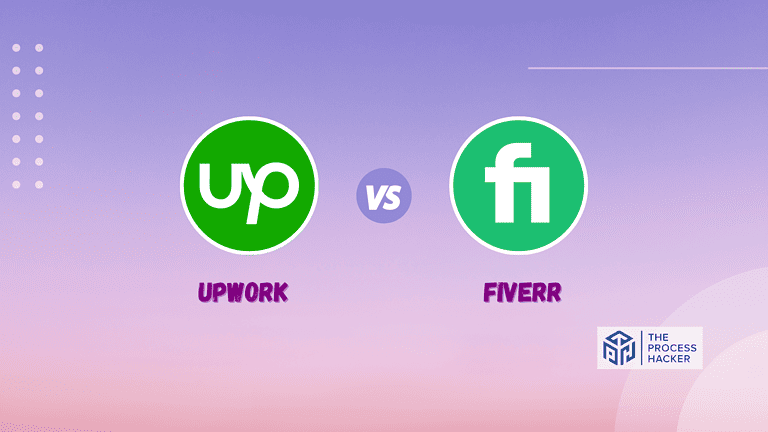Organize Your Small Business: 10 Game-Changing Strategies for Success
Innovative technologies emerge every day that promise to simplify the complexities of business management. From automating mundane tasks to providing insightful analytics, the right tools can significantly affect how you manage your time and resources. But with so many options available, how do you choose the best for your needs?
80% of small businesses fail within the first five years, and poor organization is a major contributing factor. This statistic underscores the powerful impact of the right digital tools on a small business’s bottom line.
Picture this: an office place that’s free of clutter, a schedule that’s optimized for efficiency, and a team that’s aligned and motivated. That’s the future you can create for your business.
What is Organization for Small Business Owners?
Organization, in a small business context, refers to the deliberate arrangement and coordination of resources, processes, and information to achieve specific goals. It’s about creating a system where everything has its place, and every action has its purpose.
For many small business owners, staying organized isn’t just tidying up your desk or creating a color-coded filing system. It’s about clearly understanding your business operations, from financial management and customer relationships to inventory control and marketing efforts. It’s about creating a structure that allows you to operate efficiently, make informed decisions, and adapt to changing circumstances.
Why You Should Master Small Business Organization?
Organization directly translates to increased productivity. With clear systems, you eliminate wasted time searching for information, duplicating efforts, or correcting mistakes.
This lets you and your team focus on high-value administrative tasks that drive revenue and growth. Increased productivity improves profitability, as you can accomplish more with the same resources.
Key Benefits of a Well-Organized Small Business
- Improved time management: Say goodbye to missed deadlines and frantic last-minute scrambles. Organization empowers you to prioritize tasks, allocate resources effectively, and stay on schedule.
- Enhanced customer satisfaction: When your business runs like a well-oiled machine, you can deliver products and services on time, respond to inquiries promptly, and provide a seamless customer experience. Happy customers become repeat customers, and their positive word-of-mouth is invaluable.
- Reduced stress and burnout: Chaos breeds stress. Organization brings clarity and control, allowing you to manage your workload more effectively and avoid the overwhelm that leads to burnout.
- Better financial control: Tracking income and expenses is crucial for any business. Organization helps you maintain accurate records, monitor cash flow, and make informed financial decisions.
- Increased competitiveness: In today’s competitive landscape, efficiency is key. An organized business can adapt quickly to market changes, seize opportunities, and stay ahead of the curve.
How Effective Organization Sets the Foundation for Growth
When you’re organized, you’re not just surviving – you’re thriving. You have the bandwidth to think strategically, pursue new opportunities, and scale your business. Organization provides a solid foundation for growth, allowing you to build a sustainable and successful enterprise.
How to Organize Your Small Business: The STREAMLINE Method
Organizing your small business can seem overwhelming, but it doesn’t have to be. Following the STREAMLINE method, you can systematically enhance every aspect of your business operations.
This approach breaks down the complex concept of organization into manageable steps, each beginning with a letter from “STREAMLINE.” Let’s dive into the first step to understand how you can transform your approach to business management for maximum efficiency and effectiveness.
S – Set Clear Goals and Priorities
To begin organizing your business effectively, set Specific, Measurable, Achievable, Relevant, and Time-bound (SMART) objectives. These goals will serve as benchmarks for success and guide your team’s efforts. Whether it’s increasing revenue by a certain percentage or expanding your customer base, SMART goals provide a clear direction and measurable targets, making it easier to evaluate progress and adjust strategies as needed.
Once goals are set, the next step is to prioritize tasks. Utilize tools like the Eisenhower Box to categorize tasks into four quadrants based on their urgency and importance. This method ensures that you focus on what truly moves the needle for your business, helping you to avoid wasting time on less critical tasks that do not align with your primary objectives.
Incorporate goal-setting software to keep your priorities in check and monitor progress towards your objectives. These tools are invaluable for staying on track, offering features like reminders, progress bars, and integration with other management software. By keeping a digital and easily accessible record of your goals, you and your team can remain aligned and motivated, ensuring consistent movement toward your business’s key milestones.
T – Track Time and Tasks
Time tracking software provides valuable insights into how you and your team spend your working hours. This data can help you identify areas for improvement, optimize workflows, and ensure that everyone is working efficiently.
A clear task management system helps you keep track of what needs to be done, who’s responsible for each task, and when it’s due. This prevents things from slipping through the cracks and ensures that everyone is on the same page.
Distractions are the bane of productivity. To combat this, establish protocols to minimize interruptions, such as designated quiet hours or communication guidelines.
Encourage your team to set up personal strategies as well, such as using focus apps that block distracting websites during work hours. By creating an environment that promotes focus, you can significantly reduce time wasted and increase your team’s output.
R – Revamp Your Workspace
Creating an organized and functional environment is key, whether you have a dedicated office space or a shared workspace. This means decluttering, optimizing storage solutions, and creating designated areas for different tasks.
If you work from home, creating a workspace that’s both comfortable and conducive to productivity is important. This includes investing in ergonomic furniture, ensuring adequate lighting, and minimizing distractions.
Just as physical clutter can hinder productivity, so can digital clutter. Keep your digital files organized with clear naming conventions and folder structures. Regularly clean out old files and uninstall unused applications to keep your system running smoothly.
Utilize cloud storage solutions to back up important documents, stay organized, and keep your desktop uncluttered. Tools like digital note-taking apps can also help keep your tasks and ideas neatly organized without physical paper clutter.
E – Embrace Digital Tools
Technology can be a game-changer for small businesses. By leveraging the right digital tools, you can streamline processes, automate tasks, and gain a competitive edge.
Essential software for small business organization
1) Project management platforms
These tools help you plan, track, and collaborate on projects, ensuring everyone is on the same page and meeting deadlines.
2) Communication Tools
Effective communication is crucial for any business. From email and instant messaging to video conferencing and team collaboration platforms, there are various tools available to keep everyone connected and informed.
3) Customer Relationship Management (CRM) systems
A CRM system helps you manage your interactions with past and prospective customers, from lead generation to sales and support. This lets you provide personalized service, build strong relationships, and drive repeat business.
4) Cloud storage solutions (e.g., Google Drive)
Cloud storage provides a secure and accessible way to store and share files, making it easy to collaborate with team members and access information from anywhere.
Automating repetitive tasks to save time
Automation is one of the most potent ways to boost productivity and free up valuable time. Identify tasks that are repetitive and time-consuming, and explore automation solutions to streamline your workflows.
A – Arrange Your Finances
Financial organization is the backbone of a healthy business. Monitoring your finances allows you to make informed decisions, plan for the future, and avoid costly surprises.
A well-structured bookkeeping system ensures that your financial records are accurate, up to date, and easily accessible. This makes it easier to track income and expenses, prepare for tax season, and identify areas for improvement.
Invest in reliable accounting software like QuickBooks, Xero, or FreshBooks. These platforms simplify the tracking of income and expenses and offer valuable features like invoicing, payroll processing, and financial reporting. Automating these processes ensures that your financial data is precise and easily accessible, which is crucial for making informed business decisions.
A budget helps you allocate your resources effectively and stay on track to achieve your financial goals. A cash flow forecast provides a snapshot of your expected income and expenses, helping you anticipate and plan for potential shortfalls.
M – Manage Your Team Effectively
Your team is your greatest asset. To harness their full potential, you must create an environment fostering collaboration, communication, and clarity.
Open and transparent communication is essential for any successful team. Establish clear communication channels, whether through regular meetings, email updates, or project management software. Ensure that everyone feels comfortable sharing their ideas and concerns.
Using the right collaboration tools is crucial whether your team is fully remote, in-office, or a hybrid. Platforms like Zoom for video conferencing, Google Workspace for document sharing and collaboration, and Notion for project tracking can bridge the gap between different working environments. These tools help maintain a sense of unity and continuity, ensuring that everyone, regardless of location, feels part of the cohesive whole and can contribute effectively.
SOPs provide step-by-step instructions for completing tasks, ensuring everyone follows the same process and produces consistent results. This minimizes errors, reduces training time, and frees up your team to focus on more strategic initiatives.
L – Leverage Virtual Assistants
Virtual assistants (VAs) offer a cost-effective way to outsource essential tasks that don’t require your direct involvement. This frees up your time to focus on core business activities and strategic initiatives.
Finding a reliable VA starts with identifying your needs and budget. Platforms like Upwork, Freelancer, and Virtual Staff Finder are great places to start your search. When selecting a VA, consider their experience, communication skills, and client reviews.
Once hired, set clear expectations and maintain regular communication to ensure tasks are completed efficiently. Utilizing task management tools can help you keep track of progress and deadlines.
While hiring virtual assistants adds to your overhead, the productivity gains can outweigh the costs if managed properly. Evaluate the cost-effectiveness by considering the value of the time you regain and how it can generate more revenue for your business. Regularly assess the impact of outsourcing to ensure it remains a profitable and productive part of your business strategy.
I – Improve Your Marketing Efforts
Marketing is the lifeblood of any business. But without organization, your efforts can easily become scattered and ineffective.
A well-structured marketing calendar helps you plan and execute your campaigns effectively, ensuring that your messaging and timing are consistent. This also allows you to track the performance of each campaign and make data-driven adjustments.
Leverage tools like Hootsuite, Buffer, or Taplio to streamline your social media efforts. These platforms allow you to schedule posts in advance, manage multiple social media accounts from one dashboard, and engage with your audience efficiently. Additionally, they provide valuable insights into your social media performance, helping you to tailor your strategy based on audience engagement and preferences.
Measuring the effectiveness of your marketing campaigns is crucial for understanding what works and what doesn’t. Utilize analytics tools like Google Analytics for your website and native analytics provided by social media platforms to track engagement, conversion rates, and overall campaign performance. By analyzing these metrics, you can optimize your marketing strategies for better ROI, focusing more on high-performing tactics and revising or abandoning those that do not perform well.
N – Nurture Customer Relationships
Effective customer relationship management starts with a reliable system for handling inquiries and feedback. Implement a customer service platform such as Zendesk, Freshdesk, or Pipedrive that tracks, prioritizes, and responds to customer communications efficiently. This system should enable you to capture customer interactions across multiple channels, ensuring that no inquiry goes unanswered and that customer satisfaction is always a top priority.
A customer database allows you to store and organize important information about your customers, such as their contact details, purchase history, and preferences. This enables you to personalize your communications and offer targeted promotions.
Create a customer loyalty program that rewards repeat customers and encourages ongoing engagement. This program could offer exclusive discounts, early access to new products, or special rewards points that customers can redeem. By recognizing and rewarding your most loyal customers, you foster a sense of community and appreciation, which can lead to increased customer retention and word-of-mouth marketing.
E – Evaluate and Adjust Regularly
Organization is not a one-time event; it’s an ongoing process. To ensure that you create systems that remain effective, it’s important to evaluate your progress and make adjustments as needed regularly.
Schedule dedicated time weekly, monthly, or quarterly to review your business performance, assess your organizational strategies, and identify areas for improvement. This will allow you to stay on top of any emerging challenges and make proactive adjustments.
KPIs provide quantifiable measures of your business performance, allowing you to track your progress toward your goals. Identify the KPIs that are most relevant to your business, such as sales revenue, customer satisfaction, or employee productivity, and monitor them regularly.
As your business evolves, your organizational needs will change as well. Be prepared to adapt your strategies, tools, and processes to accommodate growth, new challenges, and evolving market trends.
Key Considerations for Successfully Organizing Your Small Business
While the STREAMLINE method provides a solid framework for organizing your small business, a few key considerations must be made to ensure long-term success.
Organization is not a one-and-done task. It requires ongoing effort and commitment to maintain. Establish routines, stick to your systems, and make organization a part of your daily business practices.
Many challenges can derail your organizational efforts, from time constraints and limited resources to unexpected disruptions and shifting priorities. Anticipate these obstacles and develop strategies to overcome them.
Organization is a team sport. Involve your employees in the process, solicit their feedback, and empower them to take ownership of their own organizational systems. When everyone is on board, the results can be truly transformative.
Taking it to the Next Level: How to Scale Your Organizational Systems
As your business grows, so too will your organizational needs. To ensure that your systems can keep pace with your expansion, consider the following strategies:
Anticipate future growth by creating scalable organizational structures accommodating increased complexity and volume. This may involve delegating tasks, creating new roles, and investing in technology that can handle larger workloads.
As your business scales, you may need to upgrade your software and tools to accommodate increased data volume and complexity. Enterprise-level solutions offer advanced features, enhanced security, and greater scalability to support your growing business.
Foster a company culture that values organization and efficiency. Encourage your team to adopt best practices, share their knowledge, and continuously seek ways to improve processes and streamline workflows.
Alternatives to Traditional Organization Methods
While the STREAMLINE method is a proven approach to organization, it’s not the only option. Here are a few alternative methods that may resonate with your business style:
Agile methodology for small business organization
Agile is an iterative approach to project management that emphasizes flexibility, collaboration, and continuous improvement. This method can be adapted to various aspects of small business organization, from product development to marketing campaigns.
The KonMari method applied to business operations
The KonMari method, popularized by Marie Kondo, focuses on decluttering and keeping only items that “spark joy.” This philosophy can be applied to your business operations to eliminate unnecessary tasks, streamline processes, and create a more focused and fulfilling work environment.
Minimalist approaches to business management
Minimalism advocates for simplifying your life and focusing on what truly matters. In a business context, this translates to prioritizing essential tasks, eliminating distractions, and creating a lean and efficient operation.
Final Thoughts on Organization for the Small Business Owner
For a small business owner, mastering organization is not just about maintaining order; it’s a strategic cornerstone that drives efficiency, enhances performance, and supports scalability. By embracing consistent organizational practices, investing in the right tools, and cultivating a culture that values structure and efficiency, you can significantly improve operations and set the stage for sustained success.
Overcoming the common hurdles to organization requires commitment and a willingness to adapt, but the rewards—increased productivity, better decision-making, and a more engaged team—are well worth the effort. Remember, the goal is not to perfect organization overnight but to continuously improve and adapt systems that grow with your business.
Ultimately, a small business organized well is more agile, resilient, and poised for growth.







